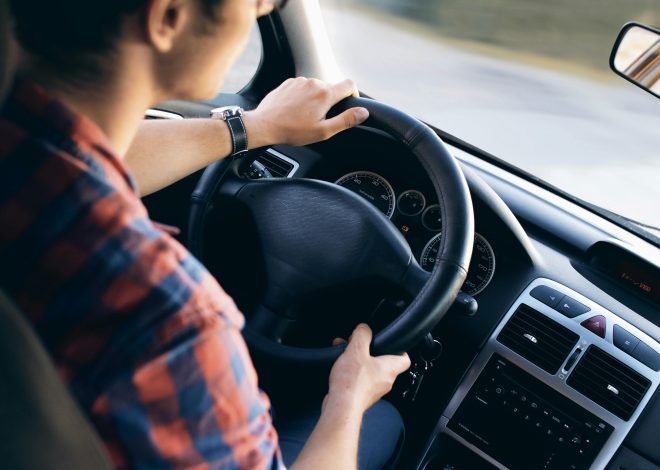
Top Tips for Success in Road Safety
Introduction
Road safety is everyone’s responsibility—whether you’re a new driver, a daily commuter, a fleet manager, or a parent with young drivers on the road. Every choice behind the wheel matters. With thousands of road accidents occurring each year in Australia, understanding and applying core road safety principles can be the difference between a safe journey and a preventable tragedy.

At Drivion.com.au, we believe that consistent awareness, proper vehicle maintenance, and safe driving habits are key to success on the road. This guide shares practical and proven road safety tips to help protect you, your passengers, and others on the road.
1. Stay Alert and Minimise Distractions
Distractions—like checking your phone or adjusting the GPS—can take your attention off the road for just a few seconds, but that’s all it takes for an accident to happen.
Safe driving tips:
- Keep your eyes on the road, hands on the wheel, and mind on the task
- Avoid texting or talking on the phone, even hands-free, if possible
- Set GPS, music, or climate controls before driving
- Avoid eating, grooming, or multitasking while behind the wheel
Tip: If you need to focus on something else, pull over safely.
2. Follow Speed Limits and Drive for Conditions
Speeding remains one of the leading causes of road deaths in Australia.
Best practices:
- Obey posted speed limits at all times
- Reduce speed in wet, foggy, or icy conditions
- Slow down in school zones, residential areas, and construction zones
- Maintain a safe following distance (at least 3 seconds in dry conditions)
Remember: It’s not just about legal compliance—it’s about giving yourself time to react.
3. Avoid Driving Under the Influence
Drugs and alcohol impair judgment, reaction time, and coordination.

Safety rules:
- Never drive under the influence of alcohol, drugs, or certain medications
- Know your limits and always plan a safe way home (taxi, rideshare, public transport)
- If you’re feeling tired, avoid getting behind the wheel—fatigue can be just as dangerous as alcohol
Warning: Even small amounts of alcohol can impair driving ability and carry legal penalties.
4. Keep Your Vehicle Well Maintained
Vehicle safety starts with roadworthy equipment. Regular maintenance can prevent mechanical failures that lead to accidents.
Maintenance checklist:
- Check tyre pressure and tread monthly
- Ensure brakes, lights, and indicators are working properly
- Top up fluids (engine oil, coolant, washer fluid) regularly
- Service your vehicle according to manufacturer guidelines
Tip: Keep a vehicle logbook to track services and inspections.
5. Always Wear a Seatbelt
It seems simple, but wearing a seatbelt remains one of the most effective ways to prevent serious injury or death in an accident.
Key reminders:
- Make sure everyone in the car is buckled up—every trip, every time
- Adjust your seatbelt to sit snugly across your chest and hips
- Replace any belts that are damaged or have been in a crash
Fact: Proper seatbelt use reduces the risk of fatal injury by up to 50% for front-seat passengers.
6. Adapt to Road and Weather Conditions
Not all roads are equal—and neither are the conditions we drive in.

Tips for adjusting your driving:
- Drive slower in rain, fog, and at night
- Use headlights and fog lights when visibility drops
- Keep a safe buffer behind heavy vehicles and motorcyclists
- Avoid flooded roads or unstable surfaces if possible
Being proactive and cautious during adverse conditions can prevent skids, collisions, and breakdowns.
7. Be Mindful of Other Road Users
Road safety isn’t just about cars. Cyclists, pedestrians, and motorcyclists are also vulnerable on the road.
Good habits:
- Always check blind spots before changing lanes
- Slow down near pedestrian crossings and school zones
- Give cyclists at least 1–1.5 metres of space when passing
- Don’t drive aggressively or tailgate—respect shared spaces
Reminder: Treat every road user with patience and respect.
8. Keep Your Focus on Long-Term Habits
Safety isn’t a one-time event—it’s a continuous mindset.
Long-term strategies:
- Take a defensive driving course
- Regularly review the road rules for your state or territory
- Use apps or onboard systems to monitor your driving behaviour
- If managing a fleet, invest in driver safety training and vehicle telematics
Safe driving habits grow stronger with time and consistent practice.
Real-World Example: Road Safety Awareness Pays Off
Scenario: A Melbourne-based delivery company saw a spike in vehicle incidents due to rapid expansion and high driver turnover.

Solution:
- Implemented monthly road safety workshops
- Introduced dash cameras and telematics to track risky driving
- Rewarded safe drivers through an internal recognition program
Outcome:
- 38% reduction in at-fault accidents within six months
- Improved driver morale and accountability
- Lower insurance premiums and vehicle downtime
Conclusion
Staying safe on the road is about more than following rules—it’s about developing habits that protect everyone. From vehicle maintenance to defensive driving and respecting others, road safety requires daily commitment.
By applying these proven strategies, you’re not only protecting yourself—you’re contributing to a safer road environment for everyone. Whether you’re behind the wheel for work or heading home to your family, let every drive be guided by safety, responsibility, and awareness.



